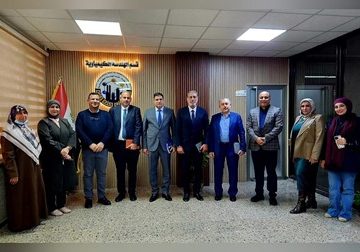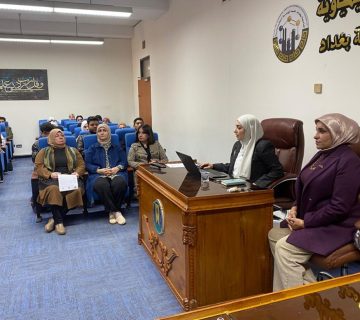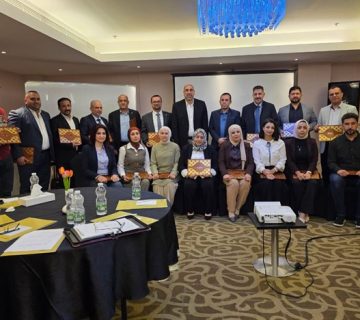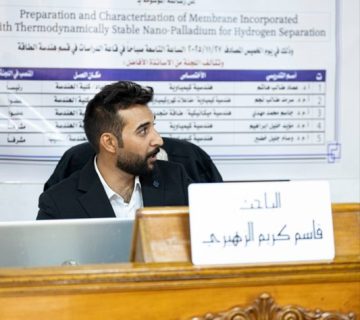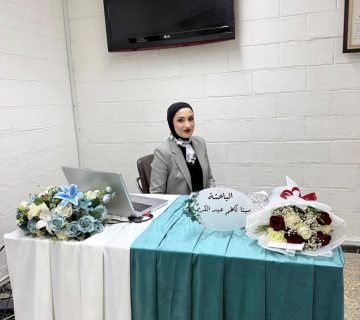The Chemical Engineering Department at the College of Engineering, University of Baghdad, held a Ph.D thesis examination titled:
“ Mass Transfer of CO2 in Sweetener Solution in Bubble Column and a Horizontal Pipe “
By the student Ahmed Dhyeaa Naseif and supervised by Prof. Dr. Ibtehal K.Shakir. The examination committee consisted of Prof. Dr. Najwa Saber Majeed as Chairman and the membership of Prof. Dr. Ahmed Daham, Prof. Dr. Raghad F. Almilly ,Prof. Dr. Mahmood K. Hummadi, and Asst.Prof. Dr. Shaymaa A. Ahmed. After conducting the public discussion and listening to the student’s defense, the thesis was accepted. The thesis was summarized as follows:
The soft drinks industry is regarded as one of the most popular and widely spread industries worldwide. To obtain a product within the permitted conditions of carbon dioxide and sugar concentration, despite the occurrence of changes in emergency operational conditions that affect the continuity of production.
Therefore, the study focused on the absorption of carbon dioxide gas bubbles in sweetener solutions within bubble columns under variable pressures in a semi-batch system and horizontal pipe in a continuous system. Two systems were designed for the two studies, consisting of very accurate measuring devices and valves (mass flow controllers, MFC) with an error rate of less than 1.5%, in addition to electronic control devices for the purpose of controlling the process.
Moreover, the Minitab statistical program was used to design experiments and study the variables and their interactions, which are pressure (1–5 bar), gas flow rate (0.2–0.7 L/min), liquid flow rate (2–6 L/min), and temperature of solution (5–30 ̊C), gas dispersion pore diameter (0.5–500 micrometers), sugar concentration (0–225 g/L), and tube diameter (1.25–1.9 cm).
Through statistical analysis, the effect of the above variables and their interactions on the absorption of carbon dioxide gas, the mass transfer coefficient, and the volumetric mass transfer coefficient were demonstrated. These effects were arranged from highest to least effective. In addition to creating a statistical model that describes the system with high accuracy ranging from (89.48% – 99.46% = R2).
Computational Fluid Dynamics (CFD) was also used to simulate practical experiments for all previous systems by using the (COMSOL) program and compare the experiment results with the modeling results. It gave an error rate not exceeding (5%, 10%, and 17%) for all results. (COMSOL)
In addition, additional variables were studied using the COMSOL program, such as the diameter of the bubble column, the diameter of the bubble, the distribution of carbon dioxide concentration, the distribution of gas and liquid velocity, the distribution of gas volume fraction, and the diameter of the pipe.
The researcher recommended studying the effect of artificial sweeteners on the absorption of carbon dioxide gas, the effect of pressure on the absorption of CO2 in bubble towers in the continuous system, the effect of pressure on the absorption of CO2 in horizontal pipes, and the use of the Ansys program for the purpose of the simulation process.


